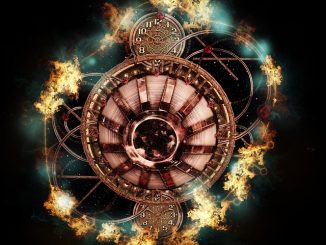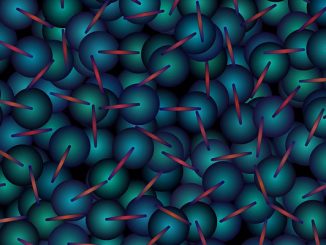
A team of Scottish and South African researchers conducted the first-ever experimental demonstration of entanglement swapping and the teleportation of orbital angular momentum (OAM) patterns of light.
The researchers, Professor Jonathan Leach of Heriot-Watt University and Professor Andrew Forbes of the University of the Witwatersrand, showed that the establishment of quantum correlations between previously independent photons is possible and that it could be utilized in the delivery of information across a virtual link.
Entanglement swapping is an experiment wherein photon pairs are uninterruptedly emitted by two different sources. Quantum entanglement happens when two photons or other quantum bodies behave as a single unit even if they are spatially separate.
In the research published in the science journal Nature Communications, the research team demonstrated how quantum information can now be transmitted and communicated without the risk of information capacity reduction. Previously, the link in which the relaying of information occurs is secure but of low speed as only two states are being utilized. It is also due to the utilization of only two states that the information capacity of the photons is reduced. In order to make the link not only secure but also fast, it requires using patterns of light to aid in the relaying of quantum codes.
The entanglement process can provide utmost security by producing super-complex codes that are not capable of being intercepted. The patterns of light open the way for quantum communications with an indefinite number of channels. One example of the light patterns is the orbital angular momentum (OAM) of light.
The ability of the quantum repeater to entangle two photons that have never interacted is called entanglement swapping and is a very fundamental part. This could be done by uniting two photons from independent entangled pairs which causes the remaining two photons to become entangled. Entanglement swapping can facilitate the sending of the photons repeatedly in short distances. This allows the better usage of the light’s spatial patterns to carry more data.
The reduction of the effects of decay and loss could be done by establishing the entanglement between two remote points without requiring one photon to travel the full distance.
Teleportation is the outcome in which the information of one photon can be transmitted to the other. There is a direct relationship between the two entangled photons and the value of one photon is automatically changed when the other one is changed. This occurs despite the two photons not being connected and in the same place.
“We demonstrate entanglement swapping of multiple OAM states of light. Our approach does not distinguish between different anti-symmetric states, and thus entanglement swapping occurs for several thousand pairs of spatial light modes simultaneously,” posted on the science journal.
The experiment is paving the way for quantum communication with high information capacity and longer distances as the scheme is scalable to higher dimensions. The research conducted and demonstrated has a significant contribution to the advancement of quantum technology.
- Bulenox: Get 45% to 91% OFF ... Use Discount Code: UNO
- Risk Our Money Not Yours | Get 50% to 90% OFF ... Use Discount Code: MMBVBKSM
Disclaimer: This page contains affiliate links. If you choose to make a purchase after clicking a link, we may receive a commission at no additional cost to you. Thank you for your support!




Leave a Reply